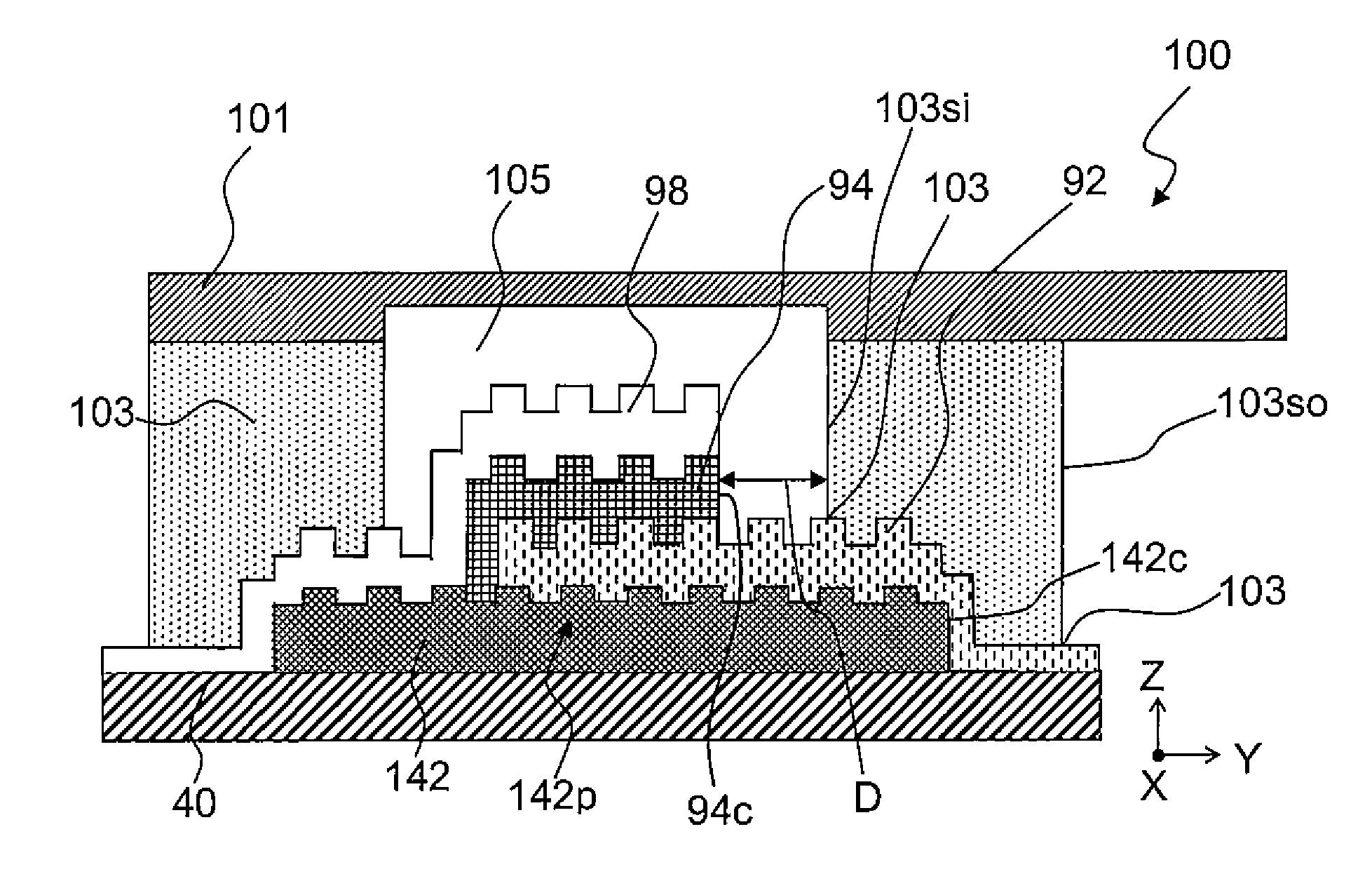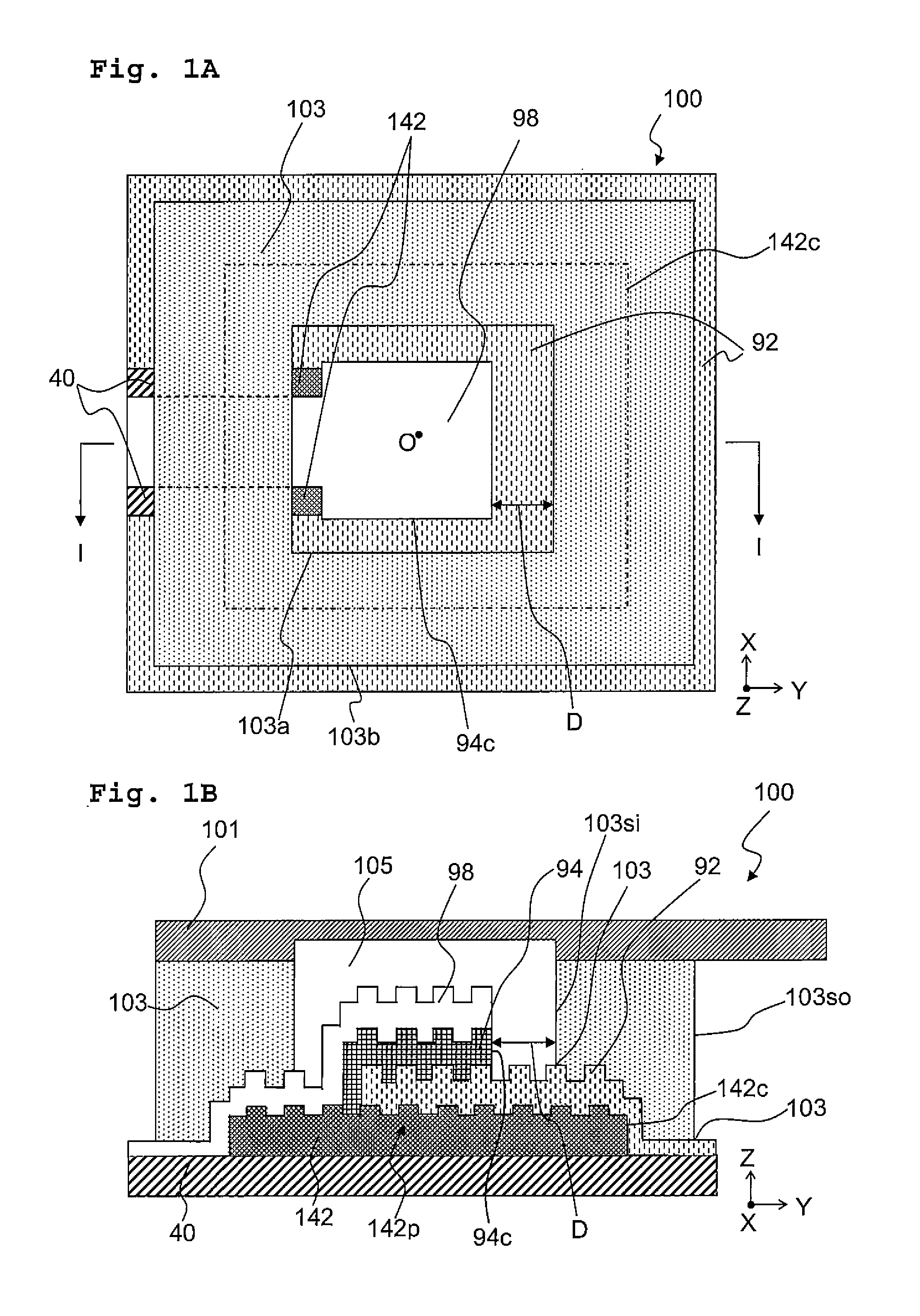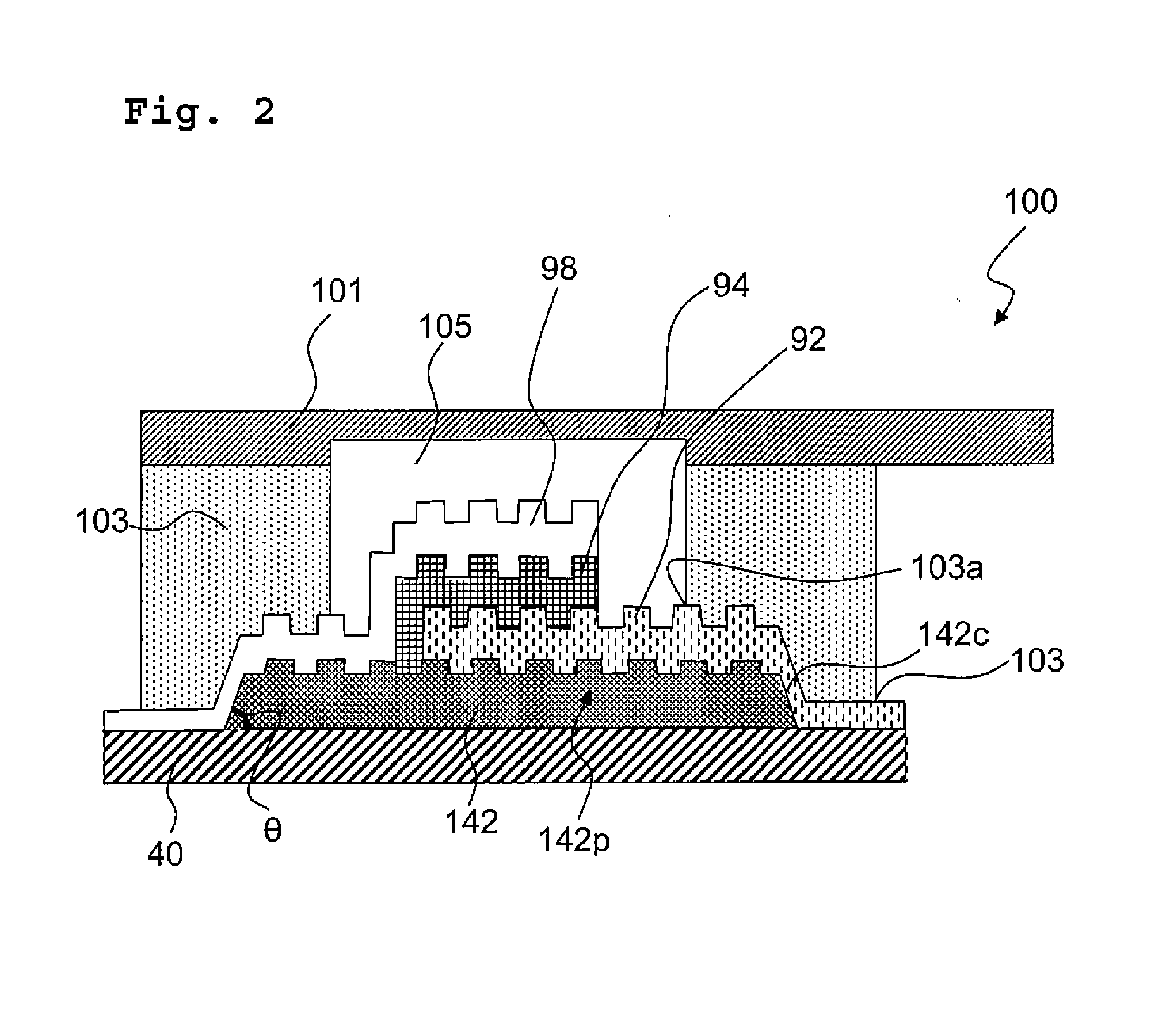Light emitting element and method for maufacturing light emitting element
- Summary
- Abstract
- Description
- Claims
- Application Information
AI Technical Summary
Benefits of technology
Problems solved by technology
Method used
Image
Examples
example 1
[0188]A mold having a concave-convex surface was manufactured as follows. At first, there was prepared a block copolymer produced by Polymer Source Inc., which was made of polystyrene (hereinafter referred to as “PS” in an abbreviated manner as appropriate) and polymethyl methacrylate (hereinafter referred to as “PMMA” in an abbreviated manner as appropriate) as described below.
Mn of PS segment=868,000
Mn of PMMA segment=857,000
Mn of block copolymer=1,725,000
Volume ratio between PS segment and PMMA segment (PS:PMMA)=53:47
Molecular weight distribution (Mw / Mn)=1.30
Tg of PS segment=96° C.
Tg of PMMA segment=110° C.
[0189]The volume ratio between the first polymer segment and the second polymer segment (the first polymer segment: the second polymer segment) in the block copolymer was calculated on the assumption that the density of polystyrene was 1.05 g / cm3 and the density of polymethyl methacrylate was 1.19 g / cm3. The number average molecular weights (Mn) and the weight average molecular...
example 2
[0205]In Example 1, the resist pattern was formed to perform the patterning of the concave-convex structure layer by means of photolithography using the positive resist. In Example 2, the method for forming the resist pattern was changed as described below, and along with this, the method for stripping the resist was also changed. A light emitting element was manufactured in a similar manner to Example 1 except for the above. FIG. 2 schematically depicts a cross-sectional structure of the light emitting element manufactured in Example 2.
[0206]A negative resist prepared as described below was used as the resist. Namely, 100 parts of methacrylic acid-methyl methacrylate copolymer in which the composition ratio (molar ratio) of methacrylic acid and methyl methacrylate was 20:80 and the weight average molecular weight thereof was 30,000; 6 parts of pentaerythritol tetraacrylic ester; 2 parts of Michler's Ketone; and 2 parts of 4-(4-dimethylaminophenylazo)-phenol were dissolved in 330 pa...
example 3
[0208]A light emitting element was manufactured in a similar manner to Example 1 except that the concave-convex structure layer was formed as described below by the UV curing method using a UV curable resin instead of the lift-off method. FIGS. 1A and 1B schematically depict a planer structure and a cross-sectional structure of the manufactured light emitting element, respectively.
[0209]1 g of silane coupling agent (KBM-5103 produced by SHIN-ETSU CHEMICAL, CO., LTD.) was added dropwise to a mixture of 1 g of water, 19 g of IPA, and 0.1 mL of acetic acid while the mixture was being stirred. After that, this mixture solution was stirred for another hour, thereby preparing a solution of the silane coupling agent. The base member was cleaned in a similar manner to Example 1, and then moisture on a surface of the base member was removed by drying using spin coater. The surface of the base member after the drying was coated with the solution of the silane coupling agent by spin coating. T...
PUM
 Login to View More
Login to View More Abstract
Description
Claims
Application Information
 Login to View More
Login to View More - R&D
- Intellectual Property
- Life Sciences
- Materials
- Tech Scout
- Unparalleled Data Quality
- Higher Quality Content
- 60% Fewer Hallucinations
Browse by: Latest US Patents, China's latest patents, Technical Efficacy Thesaurus, Application Domain, Technology Topic, Popular Technical Reports.
© 2025 PatSnap. All rights reserved.Legal|Privacy policy|Modern Slavery Act Transparency Statement|Sitemap|About US| Contact US: help@patsnap.com



